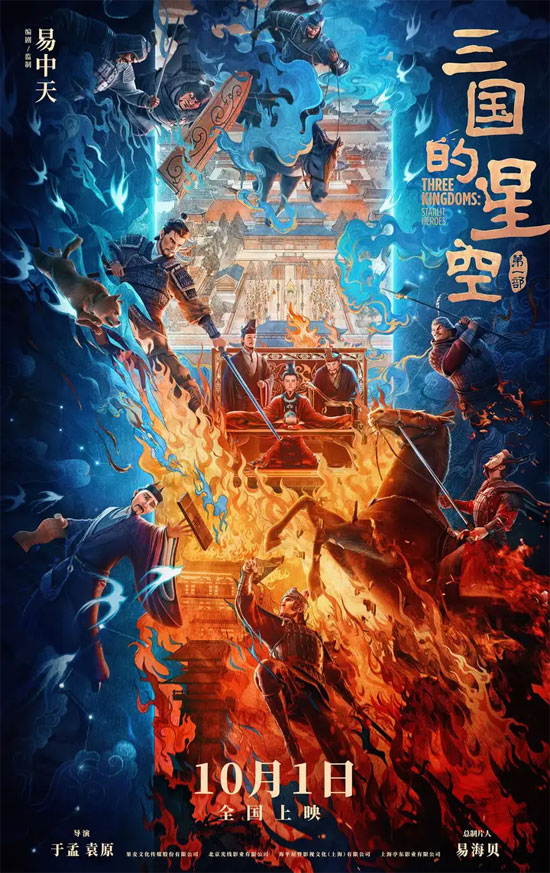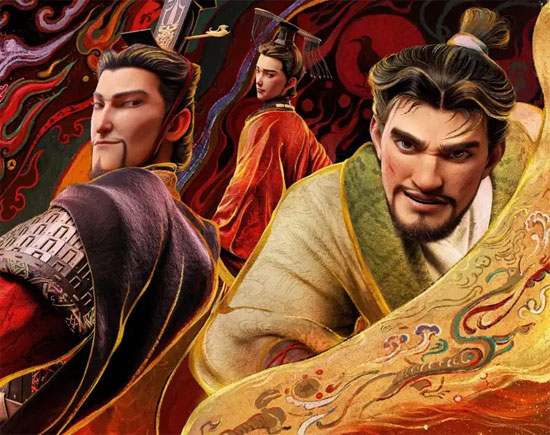Film Name: 三国的星空第一部 / Three Kingdoms: Starlit Heroes
After watching the animated film “Three Kingdoms: Starlit Heroes” (Part One), I don’t have much to say about the movie itself. What struck me more was how challenging it is to create historical works. So I’ll just ramble a bit on that point.
China’s history boasts few truly iconic dynasties, but the late Han-Three Kingdoms period undoubtedly stands out as one of the most celebrated. That said, perceptions vary widely—romances are romances, tales are tales, and history is history. Yet history inevitably invites debate (even universally accepted, settled accounts face dissent), making historical adaptations more prone to controversy than other genres… But artistic creation isn’t the same as recounting history.
So my stance on historical works is: “Production quality and artistic expression outweigh historical accuracy (as long as it’s not wildly off-base).” Even viewing it with such detached and uncritical eyes, “Three Kingdoms: Starlit Heroes” isn’t particularly outstanding. Its greatest merit remains solely in the technical execution of visuals and scene choreography.

My biggest gripe is that the film sacrifices the broader historical narrative for dramatic tension between characters, condensing the decade-plus from Dong Zhuo’s rebellion to the Battle of Guandu into a personal vendetta between Cao Cao and Yuan Shao.
Of course, from a filmmaking perspective, streamlining characters and subplots to highlight key figures and the main narrative isn’t inherently wrong. Yet, a well-crafted chronicle demands balanced detail—it should be lively without sacrificing gravity. Originality is acceptable, but the core essence must never be lost.
“Three Kingdoms: Starlit Heroes” falls short here, leaving me with the persistent feeling of watching a half-baked, underwhelming dish. Take the iconic scene of Cao Cao barefoot to welcome Xu You: I barely grasped why Xu You came, let alone felt the excitement that Cao Cao’s “welcome” should have delivered. This disconnect stems from inadequate character development and event execution.
As for the protagonist Cao Cao, I won’t debate whether his portrayal is right or wrong, positive or negative, glorified or vilified. But upon reflection, I noticed something peculiar: Regardless of how people perceive Cao Cao—as a hero, a tyrant, or a villain—the common ground is that he’s a formidable figure. The film should have focused on this core trait. Instead, the defining trait of Cao Cao in “Three Kingdoms: Starlit Heroes” is his loyalty to the emperor and devotion to the people, portraying him as a tireless servant—his strategic brilliance and military prowess take a backseat…
No wonder so many joke that this Cao Cao was modeled after Liu Bei.

Moreover, “Three Kingdoms: Starlit Heroes” takes equally bold liberties with Emperor Xian of Han, Liu Xie. While I’d rather not dwell on it, I must admit the controversy surrounding him is likely no less than that of Cao Cao.
I would have remained uncomfortable with this portrayal, but yesterday someone suggested viewing the relationships between the main characters through the lens of a tortured romantic pairing. Upon doing so, everything suddenly clicked!
Ah, had this been set in an alternate historical universe, the criticism directed at “Three Kingdoms: Starlit Heroes” would likely be far less. It just goes to show how challenging historical dramas truly are to produce…
That said, the film’s depiction of Luoyang’s splendor is truly breathtaking, and I found the battle sequences quite satisfying. If you’re willing to overlook its historical perspectives and biases regarding the Three Kingdoms era, I’d still recommend giving it a watch. Otherwise, it’s best to weigh the pros and cons for yourself.
Please specify:Anime Phone Cases » Three Kingdoms: Starlit Heroes 2025 Film Review: It’s really tough to make historical films.